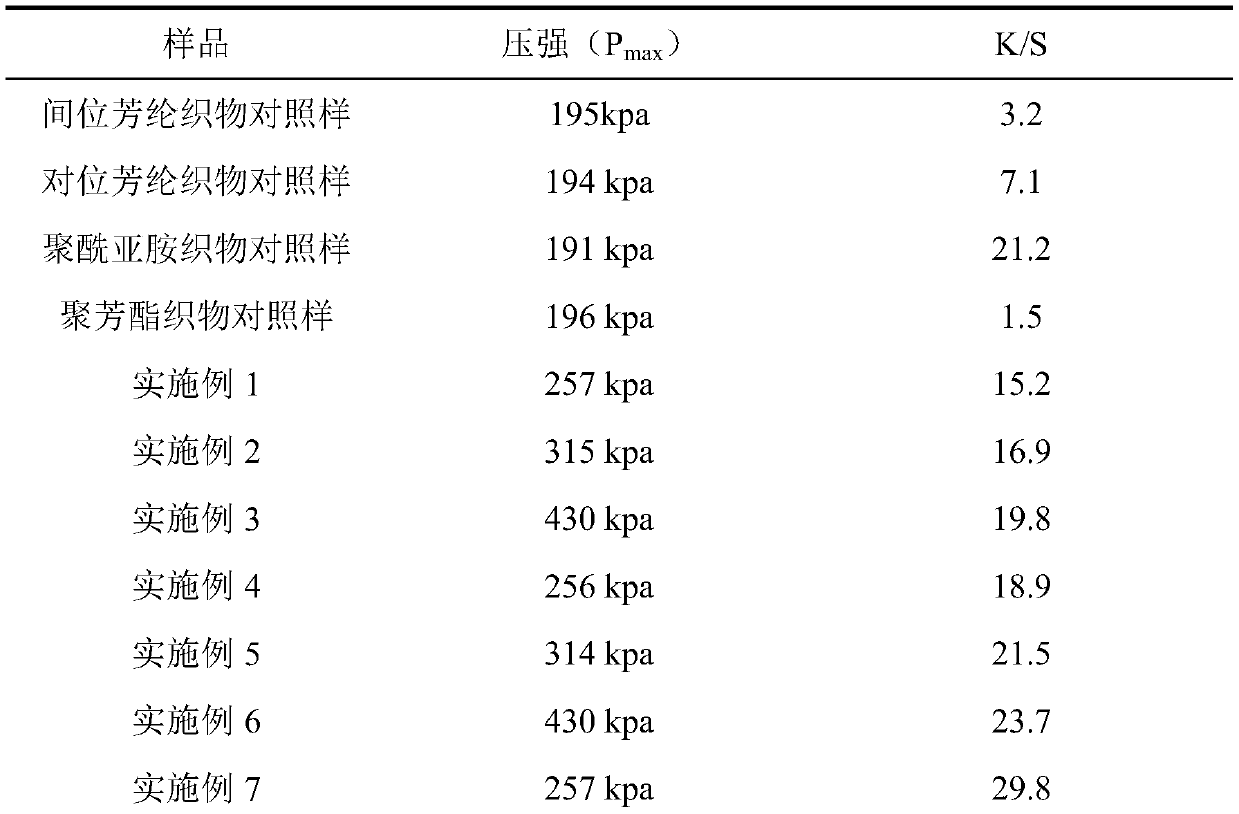High-performance fabric self-pressurization carrier dyeing method
A carrier dyeing, high-performance technology, applied in the field of textile printing and dyeing, can solve the problems of unfavorable fiber mechanical properties, dye structure properties, high-performance fabrics that are difficult to dye bright colors, and damage to the dye structure, so as to achieve good dyeing effect, change surface activity, The effect of increasing porosity
- Summary
- Abstract
- Description
- Claims
- Application Information
AI Technical Summary
Problems solved by technology
Method used
Image
Examples
Embodiment 1
[0031] Take 3g of meta-aramid fabric, use C.I.Disperse Red 54 as the dye, and prepare a dye liquor in a 400ml sealed and high-pressure dyeing cup with a volume of 1:20. The dye liquor contains N,N-dimethyl ethyl The amide mass percentage is 10%, the sodium chloride mass percentage is 5%, the ammonium bicarbonate mass percentage is 0.4%, the distilled water mass percentage is 84.55%, the dyestuff mass percentage is 0.05%, first sodium chloride and bicarbonate are mixed in distilled water Stir at 200 rpm for 3 minutes, fully dissolve the sodium chloride and ammonium bicarbonate, then add N,N-dimethylacetamide and dye, stir at 200 rpm for 3 minutes, mix the dye solution evenly, and finally Put the meta-aramid fabric into the dyeing cup, seal it tightly, raise the temperature to 70°C, and keep it warm for 60 minutes. After draining, washing and drying, the dyed meta-aramid fabric is obtained. The effect is shown in Table 1.
Embodiment 2
[0033] Take 3g of meta-aramid fabric, use C.I.Disperse Red 54 as the dye, and prepare a dye liquor in a 400ml sealed and high-pressure dyeing cup with a volume of 1:20. The dye liquor contains N,N-dimethyl ethyl The amide mass percentage is 30%, the sodium chloride mass percentage is 6%, the ammonium bicarbonate mass percentage is 1.7%, the distilled water mass percentage is 62.05%, and the dyestuff mass percentage is 0.25%, first sodium chloride and bicarbonate are mixed in distilled water Stir at 200 rpm for 3 minutes, fully dissolve the sodium chloride and ammonium bicarbonate, then add N,N-dimethylacetamide and dye, stir at 200 rpm for 3 minutes, mix the dye solution evenly, and finally Put the meta-aramid fabric into the dyeing cup, seal it tightly, raise the temperature to 80°C, keep it warm for 60 minutes, drain, wash, and dry to obtain the dyed meta-aramid fabric. The effect is shown in Table 1.
Embodiment 3
[0035]Take 3g of meta-aramid fabric, use C.I.Disperse Red 54 as the dye, and prepare a dye liquor in a 400ml sealed and high-pressure dyeing cup with a volume of 1:20. The dye liquor contains N,N-dimethyl ethyl The amide mass percentage is 50%, the sodium chloride mass percentage is 7%, the ammonium bicarbonate mass percentage is 3%, the distilled water mass percentage is 39.5%, the dyestuff mass percentage is 0.5%, first sodium chloride and bicarbonate ammonium in distilled water Stir at 200 rpm for 3 minutes, fully dissolve the sodium chloride and ammonium bicarbonate, then add N,N-dimethylacetamide and dye, stir at 200 rpm for 3 minutes, mix the dye solution evenly, and finally Put the meta-aramid fabric into the dyeing cup, seal it tightly, raise the temperature to 90°C, keep it warm for 60 minutes, drain, wash, and dry to obtain the dyed meta-aramid fabric. The effect is shown in Table 1.
PUM
 Login to View More
Login to View More Abstract
Description
Claims
Application Information
 Login to View More
Login to View More - R&D
- Intellectual Property
- Life Sciences
- Materials
- Tech Scout
- Unparalleled Data Quality
- Higher Quality Content
- 60% Fewer Hallucinations
Browse by: Latest US Patents, China's latest patents, Technical Efficacy Thesaurus, Application Domain, Technology Topic, Popular Technical Reports.
© 2025 PatSnap. All rights reserved.Legal|Privacy policy|Modern Slavery Act Transparency Statement|Sitemap|About US| Contact US: help@patsnap.com


